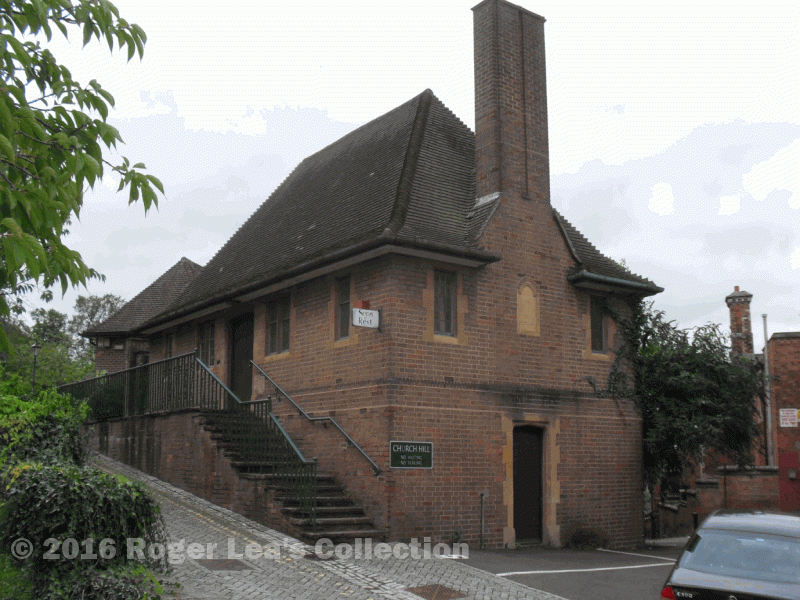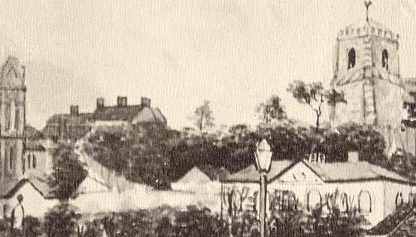The old town hall (or moot hall) of Sutton Coldfield, built by Bishop Vesey in 1529, stood at the junction of Mill Street, High Street and Coleshill Street. It was declared unsafe and demolished in 1854, when Sarah Holbeche commented in her diary, beside a tiny sketch by Miss Bracken, “The building contains two large rooms and a small one. Under the sloping roof at the entrance the butter market was held (before my memory)”, and the town stocks were kept in the arcaded space beneath.
One of these large rooms was the council chamber of the Warden and Society and the other housed the Reading Room, where members could read the newspapers and other official documents. The Reading Room was upgraded by Richard Williamson, who was Rector of Sutton from 1843 to 1850, and Warden of Sutton Coldfield in 1848: “he was mainly instrumental in founding, upon lines which afterwards developed into the present Institute, a permanent library”, wrote his successor, W.K.Riland Bedford.
This library was managed by a Reading Room Committee. In 1853 the moot hall was in danger of collapse, so the Warden and Society and the Reading Room Committee were looking for new premises. By coincidence, the Upper School had just closed down, leaving the large schoolroom on Church Hill vacant, and the master’s house (the converted workhouse in Mill Street) also contained large rooms. At their meeting of March 14th 1853 the Warden and Society agreed that Matthew Wilson, the redundant master of the Upper School, could continue as tenant of the old school house but “reserving such part of the house as may be required for the library”. At the next meeting they were more specific: “The room on the first floor at the North-East end of the house be reserved to the Corporation with a view to it being taken by the Committee of the Permanent Library”.
However, the Reading Room Committee preferred to move into the school on Church Hill, leasing it from the Corporation from December 1853. The library moved again in 1855, to a room in the Mill Street building, and again in 1859, to a purpose-built room in the brand new Town Hall which opened that year. According to a Guide to Sutton Coldfield of 1890, “The building contains a Council Chamber, cloak and committee rooms, and a Reading Room and Library well-supplied with literature, and a variety of newspapers and periodicals cover the tables. Strangers can, by paying a penny, gain admittance to the library, where there is every provision for passing a pleasant hour.”

